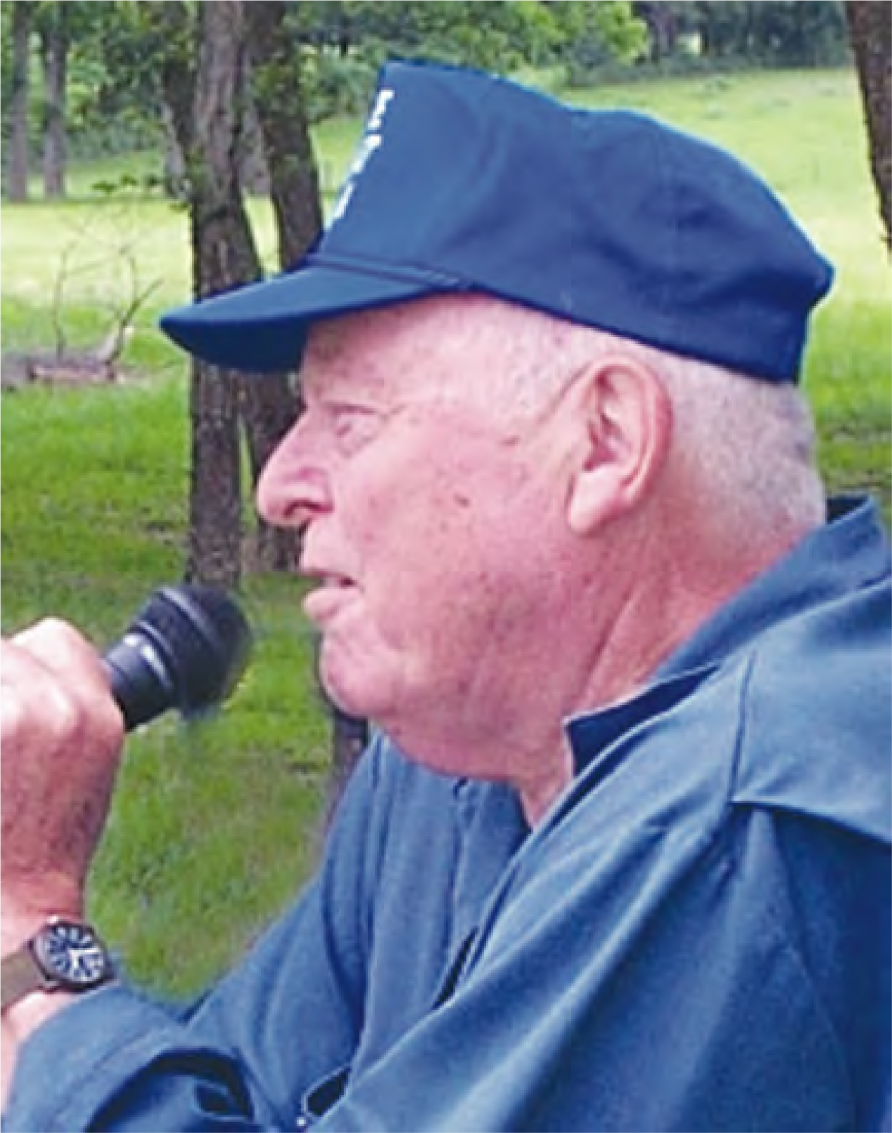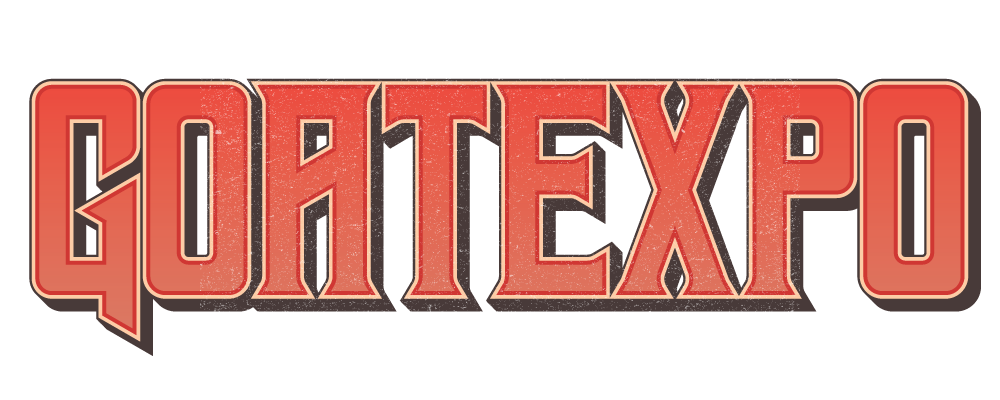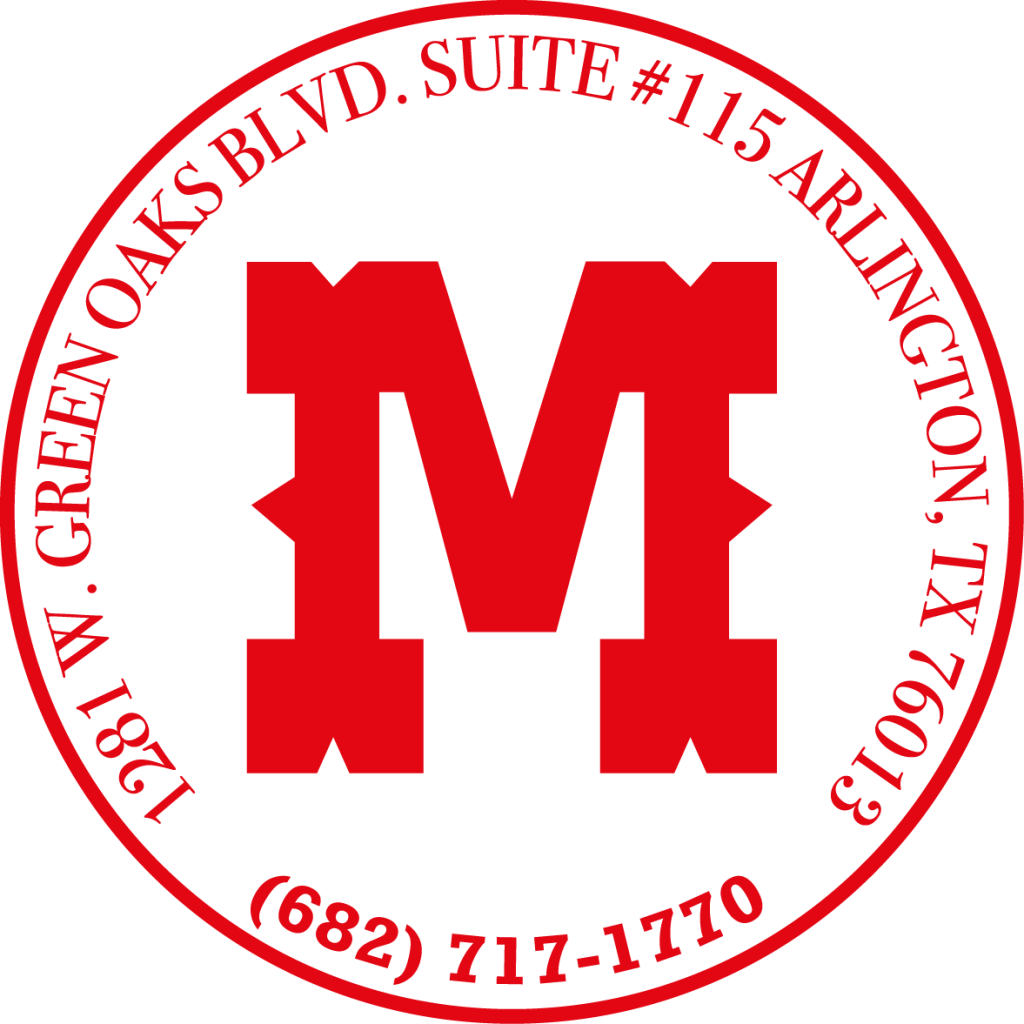
Foreword
I first met Frank Pinkerton in the summer of 1996. I was making my way around the country handing out copies of my fledgling magazine, Goat Rancher. One of the events I attended was a meat goat field day in Louisiana. Frank was one of the speakers. If you’ve ever heard Frank speak, he was as entertaining then as he is now. He drops in nuggets of goat knowledge along with a heavy dose of satire and humor. He is probably one of the most honest “goat experts” out there. He is quick to tell you that raising goats isn’t always easy and is often unprofitable. But at the same time he has been one of the biggest cheerleaders for the meat goat industry.
Frank had been retired from academia for three years when I first ran into him. Maybe that’s why he didn’t act like the typical Phds I had been communicating with at various universities across the country. In the mid-1990s, information on meat goats was scarce — and the main reason I launched Goat Rancher. I was not only a journalist, but a goat raiser also. As I tried to glean knowledge from many of these learned men and women, it was like trying to pull teeth. With the arrival of the Boer goat, studies on meat goats took off at many schools, but researchers were reluctant — almost opposed — to having their research published in the mainstream media. “Research” was for professional journals! That’s how one received more dollars for even more “Research”.
Fortunately, I had that chance encounter with Frank Pinkerton. Over the years, he, and other like-minded academics who will be acknowledged elsewhere in this book, have sought out, interpreted and shared this wealth of information. Frank’s philosophy, with which I fully agree, is that the knowledge gained by these universities is useless unless it is shared with the goat producers down on the farm.
Over the years Frank and his associates have been able to educate the layman goat rancher about nutrition, parasite control, feeding and management alternatives, stock grading and selection and numerous other facets of goat production that many of us use on our farms every day. In addition, Frank, often with the help of Dr. Ken McMillin of Louisiana State University, has secured funding for their own research, most of which is shared in this publication.
This compilation is the culmination of a lifetime’s worth of study, research, and hands-on work with goats of every sort. In this book, Frank shares his knowledge, his frustrations, his hopes, his personal views and most of all — his humor — in a manner that will educate as well as entertain goat raisers today and for generations to come. All of us goat producers owe Dr. Frank Pinkerton a big “Thank you!” for being here for us as we find our footing in this ever-growing, ever-amazing meat goat industry.
— Terry Hankins
Editor & Publisher, Goat Rancher Magazine
Biographical Summary
Frank Pinkerton was born June 10, 1928 into a clan of Alabama/Mississippi cotton sharecroppers an hour or so southwest of Dallas, TX. His widowed mother relocated to Grapeland, TX in 1935 as a newly minted primary-grade teacher and, in 1938, married bachelor Herman Murchison, cattleman, farmer, timber owner, and county wit. Just prior to the marriage, as Frank recounts the story, he cut a deal with Herman to swap, heads-up, his mother for a horse, saddle, two Jersey heifers, and, in the new house, his very own room with built-in-bookshelves and desk with inkwell.
Seems that Frank had been taking recurring grief from his momma about reading more books, speaking more correctly, practicing better penmanship, brushing regularly, and washing his feet every night. He thought, deviously, that Herman might somehow divert her attention. Apparently it worked out, because Frank still thinks it one of the better deals he ever made. This in spite of the fact that the heifers had calves, Frank had to milk them, and peddle it in Mason fruit jars, 15 cents/quart, home-delivered by horseback. In early 1942, he joined the War Effort by assisting ‘widows’ as a cowboy and, not incidentally, getting out of school at 1:00 pm—and drawing forty cents/hour, horse included.
After two years in the Navy as a delivery room instrument nurse (546 babies in 18 months—he had had one year of pre-Vet training), the earlier milk business venture apparently influenced him to major in dairy science (B.S from OK A&M College in 1950; M.S from TX A&M College, 1955). He taught dairy and animal science at Southwest TX State College, San Marcos (his current location) from ’56 to ’67 while leisurely earning a PhD in ruminant nutrition (minors in agricultural economics and rural sociology) in 1967.
In ’68, he joined the University of Kentucky and was posted to Thailand as livestock specialist and, later, Administrator of the nascent Northeast Agricultural Research and Extension Center. The Center was an agricultural development project of the U.S. Agency for International Development designed to keep rural Thailand from ‘going Communist’ like neighboring Laos, Cambodia, and Viet Nam. Among other assignments, Frank fought communism via a Brahma cattle improvement project in which Thai paramilitary personnel delivered frozen semen to owners, via American motorcycles, upon request from the Puyai Ban (village mayor, the only one with a phone).
In ’73, after a year back at UKY as Coordinator of the Feed Control Service, he went to Tokyo as Asian Director of the U.S. Feed Grains Council to conduct demonstrations and educational programs using American feed grains in beef, dairy, swine, and poultry operations in Japan, Korea, Taiwan, Hong Kong, and the Philippines (also Poland’s first beef feedlot using recycled manure as a protein and mineral supplement). But, after two years, the incessant travel led to a cablegram from his wife to the Manila office which Frank paraphrased to me as: Dear Frank-stop, there will be plenty of good-loving-stop given away in Tokyo on Friday night-stop, if you want your share-stop, get there early-stop, love, Jean. He made it in time, barely, but did return to KY shortly thereafter for another teaching tour.
However, being either a slow-learner or intrepid internationalist, he again undertook a series of short-term livestock development programs in Morocco, Nigeria, Egypt, Syria, Sudan, and Iran for the USFGC. This time, however, Jean informed him, by international phone in Rome, that she was going back to Texas and he could come, too, but only if he wanted to.
Thus did he show up at Prairie View A&M U, a unit of the TAMU system, in ’77 where he taught and managed the University dairy unit. But, in ’78, TAMU agreed with a suggestion from Research Director, Dr. Ocee Simpson, and Frank that PVAMU under take dairy goat research, and he was reassigned to develop the International Dairy Goat Research Center. He recalls that the interview for the new job was very short. The Dean asked him if he knew anything about dairy goats; yes, he said, they were those funny little cows with two tits. Close enough, said the Dean, and so it was that The Goat Man came to be.
In ’83, as the result of a bureaucratic political shuffle, he relocated to Langston University in OK, to do extension work in dairy, Angora, and meat goats. He retired in ’93 to raise meat goats in east TX and do consultant work in goat management and marketing in TX, NY, VA, NC, and LA. He gave up the farm in ’04 to look after Jean as her physical and, later, mental health declined sharply.
During his 40 year career, Frank managed to publish 10 articles on Ruminant Nutrition and Milk Technology early on, then write 17 Extension Fact Sheets/Technical Bulletins on dairy, Angora, and meat goats, and prepare 41 articles on meat goat production, marketing, and meats for popular periodicals. He also did 13 international consultancies on livestock and goat nutrition and 16 domestic consultancies on goat management and marketing, not to mention conducting 5 large-scale goat-grazing demonstrations for vegetative control in public forests and grasslands in OK, AR, AL, NC and TN.
Along the way, he taught nutrition, feeds/feeding, reproductive physiology, and marketing at four Universities. And, being something of a free spirit, he once took so many courses in Sociology (on the side, he said, just for self-improvement) that he was invited to teach Introductory Sociology. But, only for a few semesters… seems he took his students to observe, first-hand, a nearby racial confrontation in the mid-sixties (as a sort of laboratory experience; like, you know, in Animal Science 101). His Administration was not amused, and it was shortly thereafter that he left for overseas, as described above.
Introduction
Since March of 2005 it has been my pleasure to write a monthly question-and-answer column for The Goat Rancher and also to share occasional articles on various facets of the industry. As a retired Extension Specialist, these exchanges and offerings have allowed me to stay in touch with producers and to keep more or less abreast of events and developments affecting management and marketing of meat goats.
I am regularly assisted in the these efforts by my friend and professional associate, Dr. Ken McMillin, LSU meat scientist, particularly in aspects of marketing goats and goat meat, as well as our Annual Industry Update. Together we recognized the need for the goat industry to develop a USDA-approved Institutional Meat Purchase Specifications so that institutional purchasers (schools, military, penal institutions, and meat purveyors) could take bids on specifically described goat meat products. This effort led to the development of the well-regarded USDA-Approved Grading Standards for live goats and carcasses—another national industry need. We also tried to develop a Certified Goat Meat Program, a la Certified Angus Beef; we failed miserably (more on this later).
I am also assisted on occasion by others: Dr. Steve Hart on nutritional matters and parasite management via grazing management, Dr. Bruce Pinkerton (son) on forages, Drs. Robert Herr and tatiana Stanton on goat marketing, and Dr. An Peischel on multiple management issues. Moreover, I draw freely from Drs. Rick Machen and Frank Craddock, TAMU Extension Goat Specialists, and Dr. Louis Nuti of Prairie View A&M University. I have also been much relieved to ‘punt’, as needed, to DVMs Tom Thedford (retired), Tom Craig, and Bruce Olcott of OK-SU, TAMU and LSU, respectively, and lately to DVM Dave Sparks, fellow Rancher columnist, of OK-SU As I have so often told, anybody who claims to know all there is to know about goats has already lied to you at least once.
I acknowledge my enjoyable, always spirited, and sometimes profitable association with long-time friend, Brian Payne, Canadian importer/producer of Boer and Savannah goats. It was he who first suggested the idea, and then the name, Frankly Speaking, for my nascent Goat Rancher column. I remain pleased that Editor Terry Hankins agreed with his notions.
I am also particularly appreciative of and grateful for Terry’s support of this small book, from start to finish, as well as its construction and distribution. And, while it may not take a whole village, it does take a writer and a publisher—and also some urging from long-term friends/villagers within the industry: Elgin/Shirley Pape, Yvonne Zweede-Tucker, Bill Legg, Kathy Keblinger, Mary Jane Phifer, Pat Fuhr, Annette Maze, Chris Juschke, Grady Fort, and Sylvia Tomlinson, among others (I brag without shame).
And lastly, I cite, with untellable appreciation, Jean Willis Pinkerton, my constant companion and equally constant supporter for 61 years, for whom I have been a necessary and willing, if untutored, health care giver since 2003. Life proceeds apace, if less than it could be. We are thankful, appreciative, and, not least, grateful for continued taxpayer support via Medicare. Without it, both of us would have long since departed….mil gracias to all of you; your time, too, will surely come. (Jean passed in early 2011).
And now, I illustrate my pleasure, and not a little pride, in having been associated with the development of our goat industry since 1978 by joining, if only in spirit, with one Samuel Deane, who, writing in the New England Farmer, 1790, said:
“Agriculture is one of the noblest employments to assist Nature in her bountiful productions. Instead of being ashamed of their employment, our laborious farmers should toss about their dung with an air of majesty”.
With perhaps more enthusiasm than accuracy, and certainly with more determination than majesty, I have so tossed—for many years, to many listeners, in many places. Few of them seem to have suffered unduly during these presentations, nor have they come to lasting grief in the applications thereof; accordingly, I now so toss once again.
Index
Chapter1: General Interest
1.The Meat Goat Industry: Who Does What for (or to) Whom, and Why Do They Do It?
2. 2009 Meat Goat Industry Update
3. So, You Want to Do Meat Goats?
4. Profiling the Meat Goat Industry
5. A Treatise Concerning Goat Research and Extension Activities and Self-Help
6. Hobby Goat Games: Raising Kids and Children Together
7.Goat Meat Cookery
8. Not So Random Thoughts on 4-H Meat Goat ShowsHHH
Chapter 2: Marketing Meat Goats
l. Basics of Goat Meat Marketing
2. Who Really Decides What Market Goats Should Look Like?
3. Variations in Prices for Slaughter Goats
4. Target-Marketing of Slaughter Goats
5. Spring Breeding, Fall Kidding, Winter Marketing
6. Marketing of Slaughter Goats Post-Weaning
7. Direct Marketing of Slaughter Goats, Producer to Packer
8. Marketing Goats from Farm to Consumer
Chapter 3: Nutrition, Feeding, and Forages
1. Basics of Goat Nutrition
2. Composition and Characteristics of Forages, Grains, and Concentrates
3. Protein and Energy Supplements
4. Forage-Only Feeding Programs
5. Principles and Practices of Forage Management
6. Winter Forages for Meat Goats
7. Observations on Mineral Nutrition for Meat Goats
8. Observations on Vitamin Nutrition for Meat Goats
9. Ration Balancer and Nutrient Requirement Calculator
Chapter 4: Breeds and Breeding
1. Some Reflections on Breeds of Meat Goats
2. Crossbreeding Meat Goats: Theory and Practice
3. Sustaining Crossbred and Composite Breeding Programs
4. Principles of Genetic Selection of Breeding Stock
5. Observations on Buck Testing Programs
6. Thoughts on Spanish Goats: Past, Present, and Future
7. Early Research on Spanish Goats: Selected Aspects of Performance
8. Boer-Spanish Crossbreds: Performance Evaluation and Carcass Characteristics
9. Second Thoughts on Spanish Goats (and Other ‘Endangered’ Breeds)
Chapter 5: Economics of Meat Goat Management
1. Musings and Meditations Concerning the Meat Goat Industry
2. Management Influences on Break-Even Price/Pound of Slaughter Kids
3. Reducing Does Maintenance (non-feeding) Costs
4. Producer Options for Increasing Slaughter Goats Prices/Pound
5. Budget Forecasting for Meat Goat Enterprises
6. Feedlots for Meat Goats: Opportunities, Constraints, and Economics
7. On-farm Performance Testing for Meat Goats
8. Recordkeeping, Analysis, and Utilization of On-farm Performance Data
Chapter 6: Goat Meat
1. How Not to Develop a Certified Goat Meat Program
2. Evaluation of Slaughter Goat Selection and Goat Meat Classification Systems
3. Meat Goat Selection, Carcass Evaluation and Fabrication Guide
4. Factors Affecting Carcass Grade and Lean-Meat Yield
5. Value-Added Goat Meat Products
6. Principles of Kid Growth and Development
7. Imported Goat Meat: Consumption, Channels, Characteristics, Acceptance
8. Crossbred Carcass Project Results
Chapter 7: Parasite Management in Meat Goats
1. Planning an Integrated Parasite Management Program
2. Dewormers and Alternatives Available for Use




























